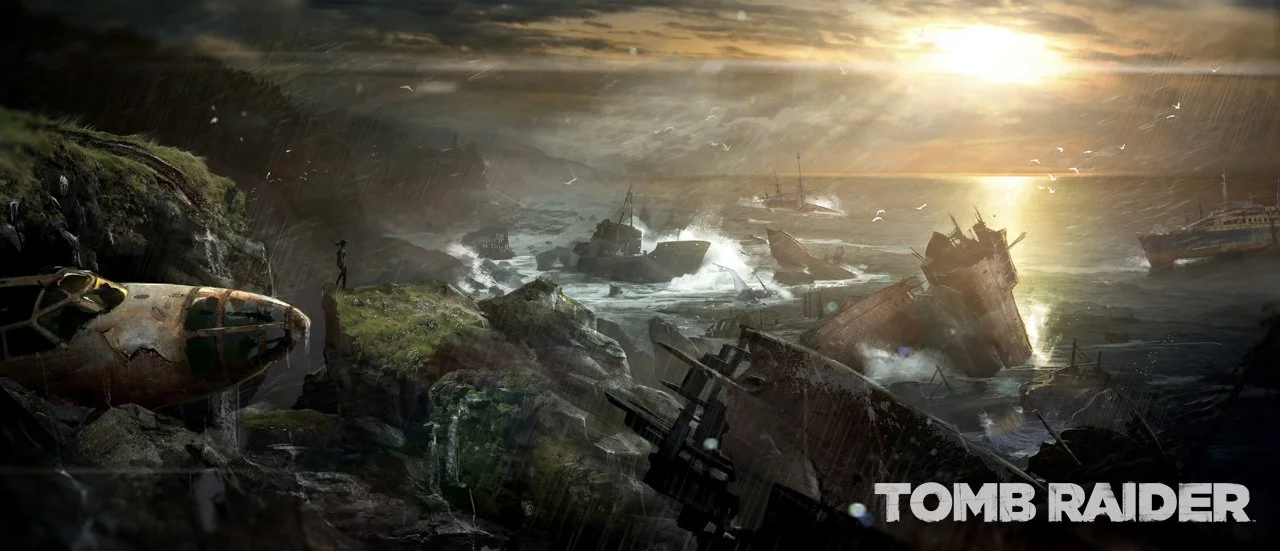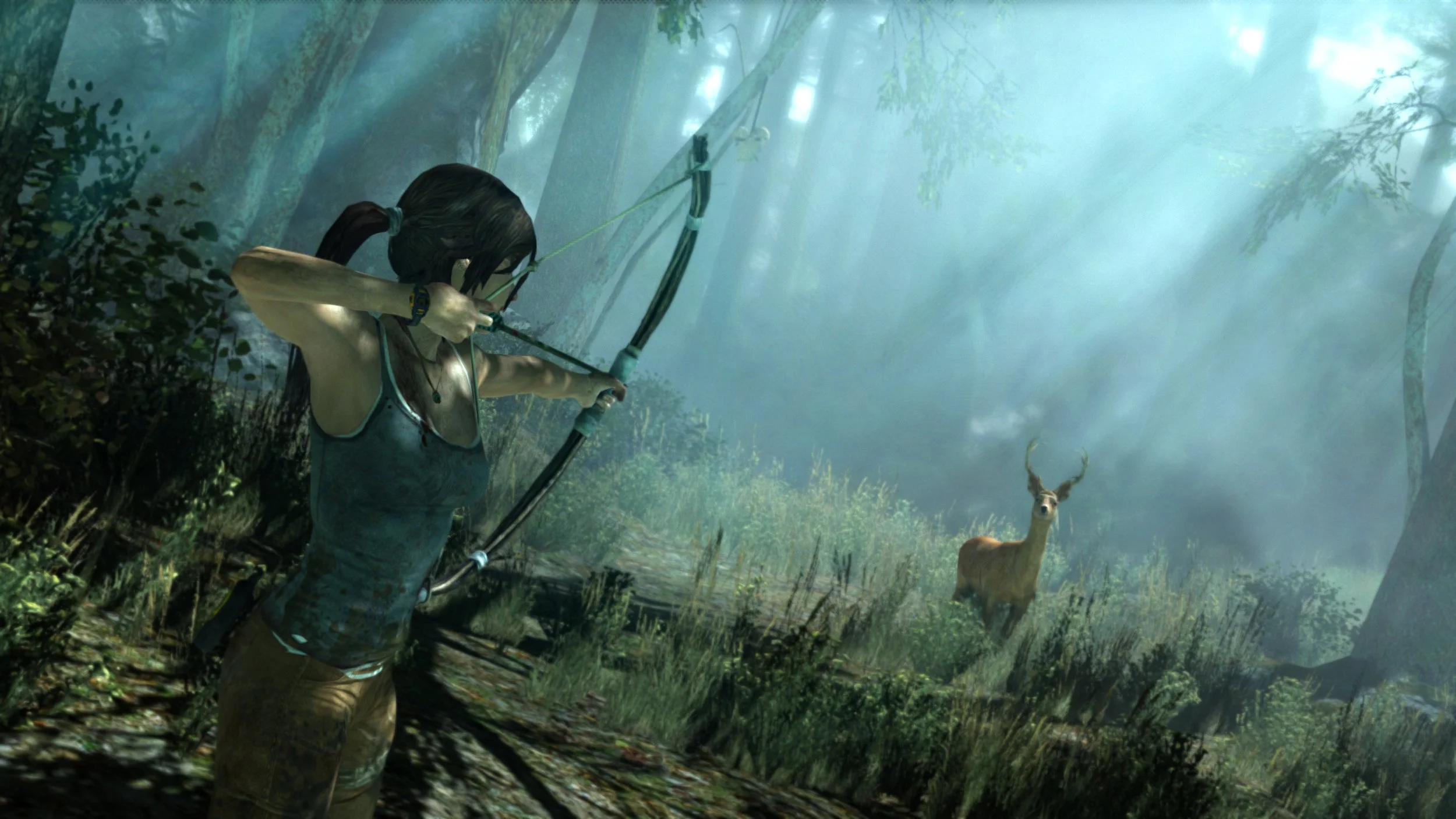First Frames - The Tomb Raider Series
A reboot should capitalize on the joys of the original while addressing its woes for a new audience: simple as that.
When developers were tasked with bringing video games from the ‘90s to the 2000s, there were… mixed results.
Take Sonic 06, for example. It’s one of the most memorable failures in gaming–“Sonic is new, edgy, and kisses human girls now” didn’t exactly move units. Crash Bandicoot has played hot potato with developers for decades and started over half a dozen times. Ask a fan of the series which is best, and they’ll point you to the original trilogy. And those are the few games that did survive their reboots, so let’s take a moment of silence for those that did not (rest in peace Duke Nukem Forever, Bubsy: The Woolies Strike Back, and Banjo-Kazooie: Nuts and Bolts). For whatever reason, most games that were born in the ‘90s seem to be stuck there, unable to make the leap to the new millennium.
The key word there being most.
The ‘90s games that survived the jump to the 2000s did so because those games’ developers knew what worked. Sonic stopped making out with photorealistic women (thank God for that) and went back to basics with Generations and Activision remastered the beloved original Crash Bandicoot games. A reboot should capitalize on the joys of the original while addressing its woes for a new audience: simple as that. For one of the best examples of this, look no further than the Tomb Raider herself.
Tomb Raider is in the annals of iconic game franchises for a reason. Lara Croft is one of, if not the most, influential female protagonist in video games. The games perfectly encapsulate the action-packed energy of globe-trotting treasure hunting. The genre that started in the Atari days with the humble game Pitfall crystallized with Tomb Raider in ‘96 and soon after, inspired franchises like Uncharted. Then in 2013, Crystal Dynamics attempted to bring that magic up to speed for the digital age.
The Survivor Saga, as Crystal lovingly calls it, takes place over three games. The first, aptly named Tomb Raider, rebooted the franchise for the 21st century. Then, Rise of the Tomb Raider released in 2015, and the trilogy concluded with 2019’s Shadow of the Tomb Raider. Each game had a mission. It had to prove that Tomb Raider wasn’t like other games stuck in the 90s. They had to prove that they could make an original treasure-hunting game after the marked success of Uncharted. And then they had to prove that it wasn’t a fluke the first time and sequentially stick the landing in Shadow.
Spoiler alert: it wasn’t a fluke.
Where Uncharted feels like a light, popcorn movie, Tomb Raider takes things in a darker direction.
Tomb Raider (2013) smartly places Lara Croft not in her prime as the badass treasure hunter we know from games prior but at the beginning of her story. She’s young, inexperienced, and washes up on an island off the coast of Japan with nothing but her wits and her father’s legacy on her shoulders. For fans of the franchise of old, it’s a welcome change of pace; for newcomers, it’s an introduction to the most famous heroine in gaming. From there, Rise and Shadow further explore Lara’s backstory and motivations. We see her father in flashbacks and learn the secrets behind his death, all while Lara grows in both strength and obsession with the answers he was chasing. She’s an interesting foil to the quippy, perennially lucky Nathan Drake. Croft is (initially) less confident, quieter, but every bit as interesting and capable.
It’s impossible not to make comparisons to Uncharted over the course of the Survivor saga. Each Tomb Raider game, like Uncharted, follows Croft pursuing answers to a myth or legend, whether that’s immortality, a lost city, or the apocalypse itself. Along the way, Croft meets a cast of characters who help in her expedition (Drake has gruff mentor Sully, Croft has level-headed and warm Jonah) while antagonists race to seize the prize for themselves. Gameplay is built around exploration, climbing, and third-person shootouts with bad guys, and small treasures are scattered throughout the world for Croft to find. Both games utilize genre tropes and core gameplay, but where Uncharted feels like a light, popcorn movie, Tomb Raider takes things in a darker direction.
Side characters are regularly killed throughout the games. Croft grapples with the deaths she causes throughout the series, culminating in her accidentally starting the Mayan apocalypse in Shadow of the Tomb Raider. And, while Uncharted flirts with the supernatural, Tomb Raider rests squarely in science fiction. Each game’s climax sees Lara stop an otherworldly event, like her friend being used by a cult as the vessel for an evil queen, or an army of immortal warriors marching through a city buried under a glacier. It takes itself seriously and asks the player to do the same–absurd set pieces and all.
And, if there’s one reason to play these games, it’s the set pieces. You’ll find yourself storming up a mountain as howling winds and magical energy tear it apart and battling a god underneath a solar eclipse. It’s awesome in the way that a Michael Bay movie is. It’s nonsensical, sure, but who cares? You’re ziplining in an iceberg!
It’s nonsensical, sure, but who cares? You’re ziplining in an iceberg!
Tomb Raider further differentiates itself from Uncharted by including a deep skill tree and upgrade system that encourages exploration. You can hunt animals for skins and meat, forage berries and sticks to craft arrows, and generally play more of the survivalist role. I never got deeply invested in the crafting or foraging sides of the games, but it’s still a nice draw to flesh out the systems available to the player. Breaking up what can sometimes be monotonous climbing and shooting with hunting and gathering is always a good thing.
The reason I took up the Tomb Raider reboot after all these years is the upcoming animated series Netflix is producing. It’s helmed by the team behind the excellent Castlevania show. And with Hayley Atwell voicing the Tomb Raider herself, it’s bound to be another fantastic video game adaptation in a year of stellar releases. So if you’re interested in the show, but haven’t yet delved deep underground to uncover ancient secrets, take this as your sign. The Tomb Raider series made the jump to the new millennium because it knows what works. And what works is the origin story of the greatest woman in gaming.




